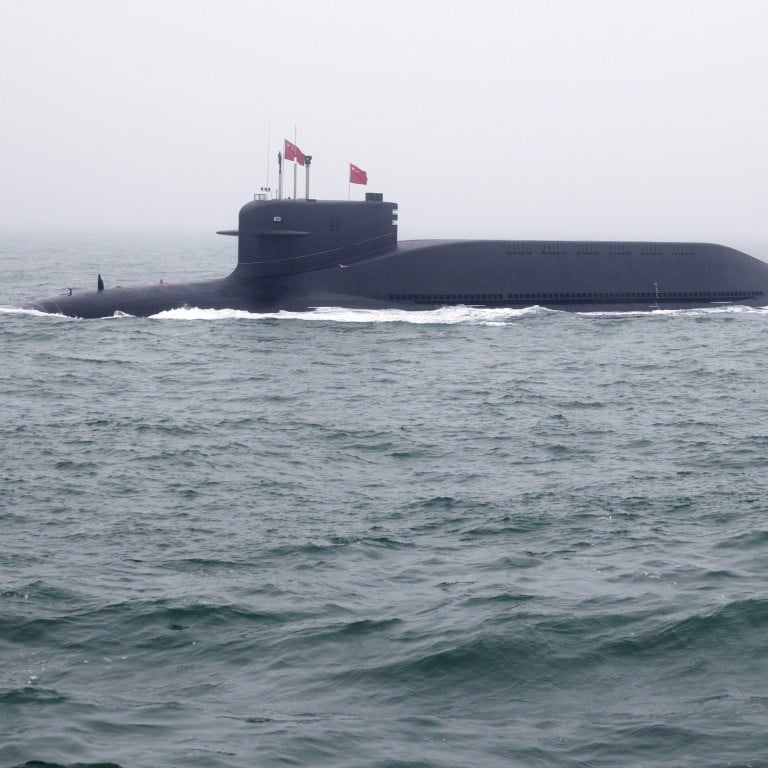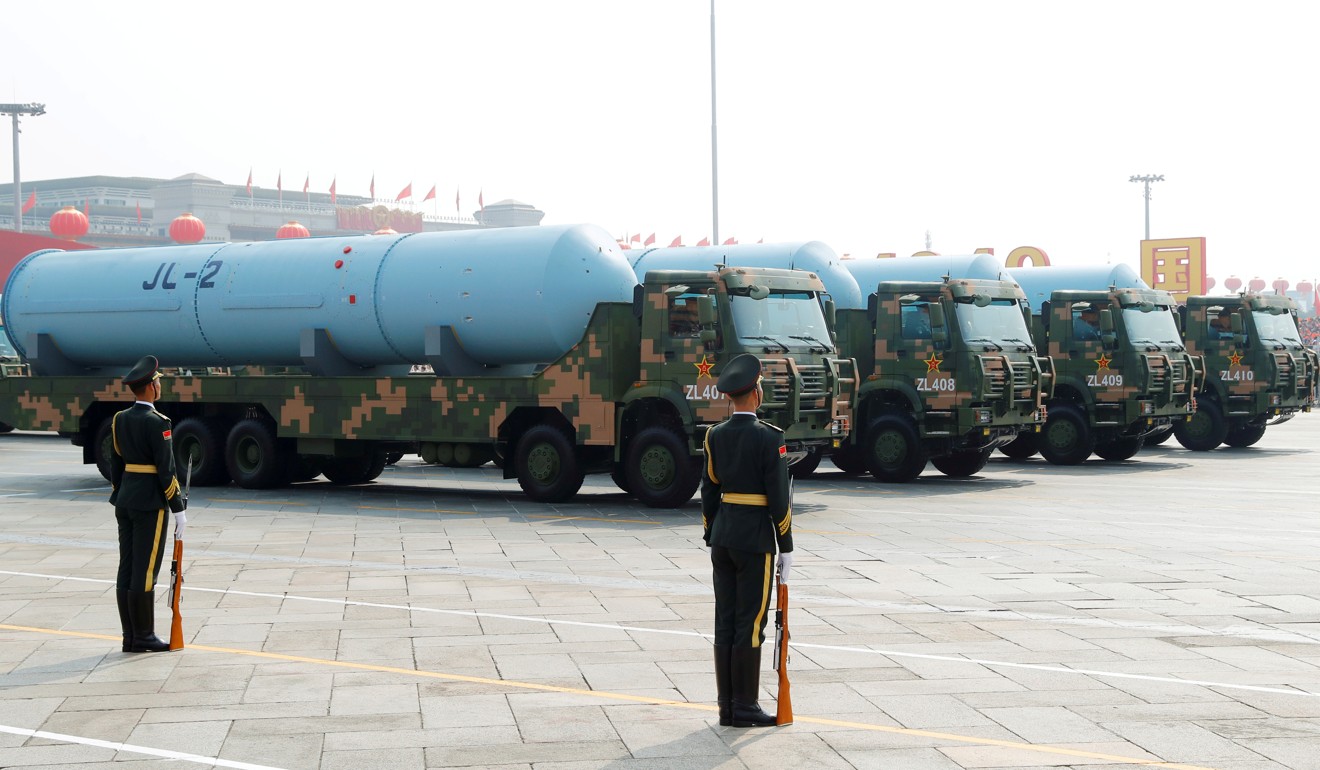
China nuclear missile development steps up a gear with test of weapon capable of hitting US mainland
- Military source says work on JL-3 ‘Big Wave’ has been separated from development of next generation Type 096 submarines to speed up process
- Move is seen as a response to Donald Trump’s targeting of China, along with Russia and North Korea, in his deterrence strategy
China has moved to speed up development of its most advanced submarine-launched nuclear missile, a weapon capable of striking the US mainland, military sources have said.
Two independent sources told the South China Morning Post that the Chinese navy had tested the JL-3, or Julang (or “Big Wave”) missile – which it ultimately intends to pair with its next-generation nuclear submarines.
It was launched from Bohai Bay in the Yellow Sea late last month, with the warhead landing in the northwest Gobi Desert in Xinjiang.
Unlike the previous three tests, which used a conventional Type 032 submarine, the latest launch was conducted using the Type 094 nuclear submarine, according to one source. But the military ultimately plans to arm the Type 096 submarine with the missiles, a process that could take years to complete.
The JL-3 test was first reported by The Washington Times on Christmas Eve in an article that cited Pentagon sources who said the launch had been conducted on December 22 and monitored by US satellites and other intelligence platforms.
Chinese military observers said Beijing’s missile tests were in response to moves from US President Donald Trump to target the country – along with Russia and North Korea – in his deterrence strategy.
“Construction work on the Type 096 nuclear ballistic missile submarine is not finished. In order to speed up the JL-3’s full development, missile testing and submarine development have been separated,” said the source, who requested anonymity due to the sensitivities surrounding the topic.
“Theoretically, the range of the JL-3 is now over 10,000km [6,000 miles], fulfilling the original target of hitting the US if the missile was launched from the Chinese near shore.”

China has already built six Type 094, or Jin-class, nuclear ballistic missile submarines, four of which featured in April’s parade to mark the 70th anniversary of the PLA Navy.
China conducted five flight tests of the JL-2, the predecessor of the JL-3 which has a range of 7,000km before its full deployment to the navy in 2015.
Each Type 094 submarine is able to carry 16 JL-2 missiles, but the upgraded Type 096 will be able to carry 24 JL-3s, according to the most recent Pentagon report on China’s military capabilities.
China’s military gets new rules to improve safety
Another military insider said even when the JL-3 was ready it would still take at least five years to integrate it into the 096 operating system.
“Compared with the American Ohio-class submarines that carry Trident II ballistic missiles, there is a big gap for China to catch up in sub technology,” the person said.
The source continued that the Type 094 had a “weird hogback” design based on the old Soviet Delta class nuclear submarines to get round space constraints that limited its missile capacity.
The Russian navy has since solved the problem in the design of the Borei-class nuclear submarines, which can carry 16 Bulava missiles.
Both sources declined to reveal whether China’s next generation Type 096 had tackled the “humpback matter”, but said that noise problems the 094 had also suffered should have been fixed.
China spent almost 10 years getting the JL-1 missiles integrated with its Type 092 subs and needed almost seven years to complete the process for the JL-2 and Type 094s.
It has also been working to develop its missile capabilities – including the DF-41 intercontinental ballistic missile (ICBM), a land-based version of the JL-3.
Pentagon head says China has become top US military priority
Military expert Zhou Chenning said Beijing’s efforts could be seen as a response to Trump’s decision to list China as one of America’s “potential threats” in his 2018 “Nuclear Posture Review”.
“Beijing has to strengthen its second nuclear strike capability by completing the ‘nuclear triad’,” Zhou said, referring to ground-based ICBMs, submarine-launched missiles and air-launched weapons.
“The US has resumed a series of nuclear tests since Trump came to office in recent years, including the B-61 airdropped nuclear bombs, the regular tests of the Trident II D5 ballistic missile and the American army’s move to develop land-based missiles. All those moves will be a great threat to China.”
The US navy is expected to deploy more submarine-launched missiles in the next five years, with Lockheed Martin receiving a contract worth US$1.22 billion to built Trident II D5s missiles in October.

